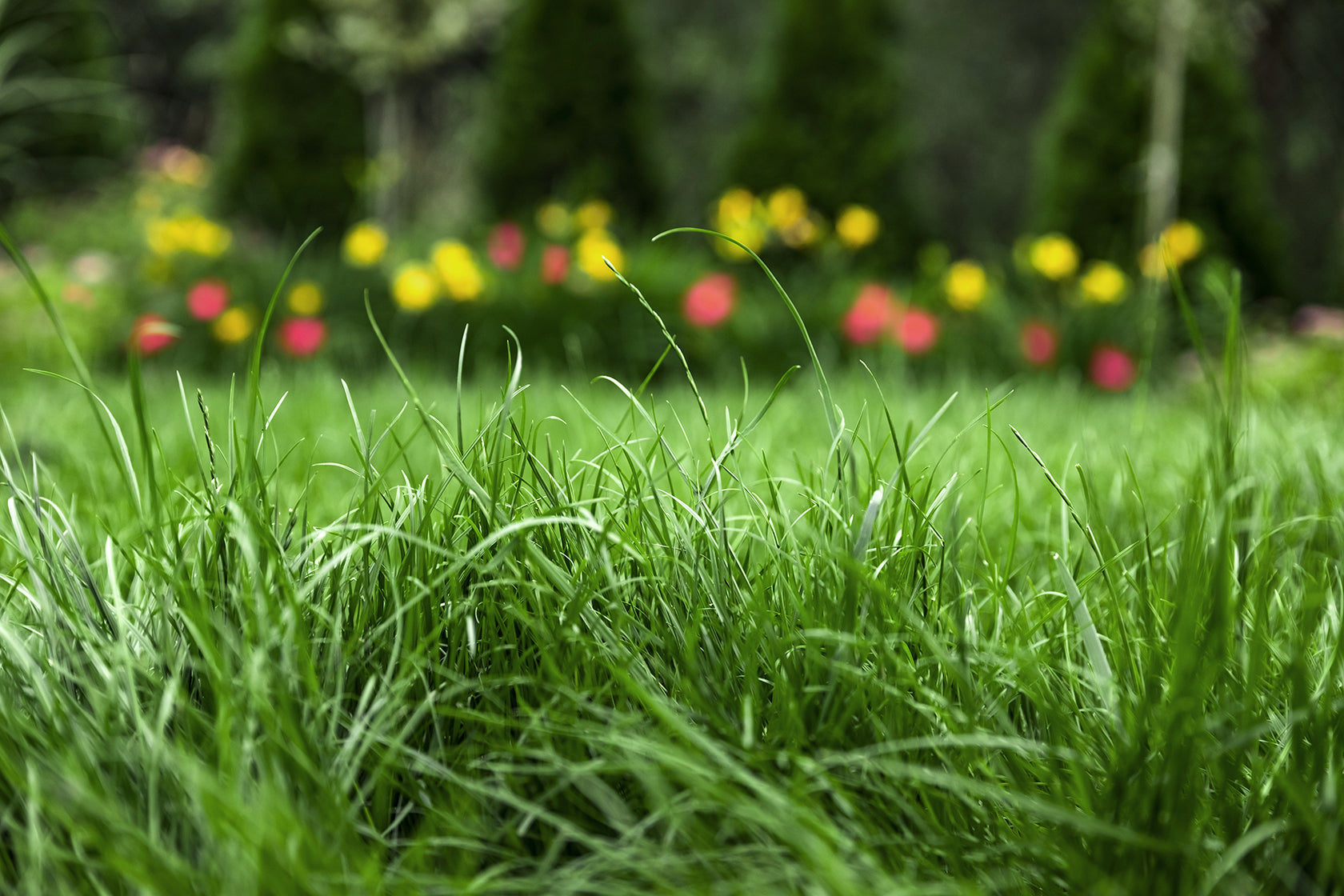
How to Plant Grass Seed
Basic Information about Grass and Seeds
Earlier this spring, I tossed handfuls of leftover grass seed on the bare patches of my suburban lawn and expected to wait a few weeks and have a luxurious lawn that would be the envy of the neighborhood – green, lush, free of weeds. Hmmm…that did not work so well, so I started researching the best practices for growing a great lawn in the Susquehanna Valley’s clay soil. With so much information online, I turned to Lancaster’s seed and soil experts – Rohrer Seeds.
I learned that there are lots of different kinds of grasses, high-quality seeds should be used, the soil and site need to be prepared, and it is possible for too much rain to drown the seeds.
Grass is great – it controls soil erosion, adds a carpet of green to a yard, thrives with regular mowing, filters pollutants, and is home to many beneficial organisms. Historically, prairie grasses helped prevent mud from being tracked into homes and provided food for wild and domestic animals, and from that start, lawns were born.
How to plant grass seed in spring?
Most grass seeds are blends (some germinate in cooler weather, and others grow better in warmer weather), so throughout the growing season, new, thicker growth is being naturally cultivated. And as grasses are mowed, they compensate being cut down by producing more leaves, which in turn thickens the lawn! There are thousands of grass species, but about 50 types are used for lawns. Specialty grass seeds can be sown for pastures and wildlife feed plots, so whether you want a lush lawn or perfect pastures, check with the pros at Rohrer Seeds.
Are you planting grass seeds on hard dirt?
Test your soil and strive for a pH of 6.5 to 7 – ideal for most grass types. Rohrer Seeds offers a variety of test kits, so it is easy to test anything from bare patches to a few acres. When planting grass in our region, remember that much of our soil is hard clay that needs to be loosened and fertilized, so that grass seedlings have enough space underground to develop strong roots.
To start, remove weeds, stones, and other debris and break up the soil clumps in the areas to be planted. Work some nutrients into the soil like compost or a slow-release fertilizer, adding topsoil, if necessary. Then rake the planting area and gently tamp it down. Some pros recommend letting the ground sit for a week or so, to let the soil settle, and make sure there are no lumps, dips, or areas where rainwater will pool. If the weather has been dry, watering is necessary.
Several days before seeding, rake the area again and water the day before planting. (Tip: if your shoes get muddy, the soil is too wet for planting.)
Start planting by scattering the seed. Small areas are fine to be done by hand, but for larger areas, a lawn spreader or a mechanical seed “shooter” will spread the right amount of seed evenly across the area. (Tip: Too much seed will have the baby grass competing for nutrients, so use only the recommended amount of grass seed for a stronger start.) Newly planted seeds need some protection as they germinate, so a thin layer of topsoil or a very thin layer of mulch is recommended. Inexpensive yellow grain straw is often used as it offers great protection and is easily broken-down during mowing.
Grass seed needs regular watering as it develops into a lush lawn, generally about an inch a week, but not all at once. During late summer dry spells, lawns may go brown and dormant, but if they have been watered properly during the seedling stage and are well established, they will bounce back once watering/rains resume. Use common sense when it comes to watering since over watering can damage young grass, too.
Growing Green Grass:
Grass seeds generally germinate (start to grow) a week to 10 days after they have been planted. Of course, the timing depends on several factors, including the type of grass seed, climate, moisture, and soil condition. High quality, hearty grass seeds and mixtures in the fescue and bluegrass families are recommended for our region because we live in a “transition zone” where weather extremes of both heat and cold impact grass growth.
The type of grass seed you plant also depends on the traffic in your yard, (Are there children and pets playing in the yard or is it more of a gorgeous green carpet?), whether your yard gets a lot of sun or is shaded by trees, and even whether your yard is surrounded by manicured lawns or farmland. These are the kinds of questions the pros at Rohrer Seeds may ask you before recommending a specific seed mixture for your lawn.
How long does it take for grass seed to germinate and grow?
Grass seeds grow at different rates – 5 to 10 days for ryegrass, 1 to 2 weeks for fescue, and Kentucky bluegrass can take 2 weeks up to a month to fully grow, under ideal conditions. If the weather is too hot or cool, with too much or too little rain, full growth may take a little longer. Remember to loosen the soil before planting because the hard, clay soil makes it hard for young grasses to establish strong roots and thrive.
How about planting grass seeds in bare spots in the yard?
Grass seed can be planted in existing lawns to fill in bare spots (generally using the same type of seed that is already growing there) or adding a second variety of seed to enhance your lawn’s strength and weed resistance. Not sure what your lawn type is? Check with the pros since some seeds are more compatible than others. Raking up debris, loosening the soil and adding a light layer of topsoil ensures your new seeds will get a good start to fill in bare patches. Consider renting a seed spreader, check the settings, and walk your lawn up and down and then from side to side for even coverage. Add a thicker layer of topsoil and seed on bare patches. Remember to water, and new grass should spring up pretty quickly.
Does grass seed go bad? How long does grass seed last?
Did you know that grass seed has an expiration date and is best stored in a cool, dry place? So, if you find some old seed in the shed that is over two years old, it probably won’t give you the lush lawn you want; it is probably time to buy fresh grass seed. (Yes, lesson learned!)
According to a variety of sources, planting grass in Pennsylvania is best between August 15th and October 1st. Grass seeds benefit from warm soil, cool temperatures, and autumn rainfall. While planting in the spring is possible, tender grass seedlings are more likely to be overwhelmed by weeds. (Another lesson learned!)
Speaking of Weeds:
Weeds are part and parcel of every lawn. Dandelions, clover, violets, buttercups, thistle, and other invasive species love to share your lawn. As a kid, my babysitter used to give me a nickel for every weed root I could pull out of her lawn. While there are pre-emergent and post-emergent weed killers on the market, the best weed prevention is thick turf with strong roots. Proper mowing height, a sharp lawnmower blade and the best grass seed mixture for your soil and yard use go a long way to controlling weeds. You may even be able to get away with just digging out the occasional dandelion or violet.
Alas, it can get more complicated! There are different kinds of weeds that respond to different kinds of weed killers that are best applied at different times. Our house backs up to a farm, and we still struggle with nutsedge and crabgrass, with an occasional flowering weed raising its cheerful head! There are two basic types of chemical weed killers on the market. Pre-emergent weed killers target the weeds in the early spring before they sprout. Post-emergent weed killers are absorbed into the weeds that are already growing. Both have some toxicity to grasses, flowers, and crops and could be harmful to insects, animals, pets, and people. It is vital to follow all the safety guidelines and instructions when applying a weed killer. The pros may have some other suggestions from DIY solutions of soap, vinegar, and salt to less toxic, more organic weed preventatives.
Thick grass roots, proper grass height, manually removing weeds, and patience will go a long way to keeping your lawn weed-free.
Grasses for Wildlife and Foragers:
With all the focus on the green lawns of suburbia, the Susquehanna Valley is also home to lots of wildlife and farm animals that benefit from a variety of pasture grasses. Rohrer Seeds carries a variety of pasture grass seeds that are native to or grow well in Pennsylvania. Some are warm-weather grasses that grow during June, July, and August, and area extension services recommend planting native wildflower seeds along with the grasses, to boost the benefit for local birds, pollinators, and wildlife. Many of these grasses are “bunch grasses,” which means that each seed develops into a plant that will grow into a large bunch with lots of stems. These grasses have deep roots and can grow up to 6 feet in height, great for wildlife.
Once these pasturelands and native grasses are established, they are quite hearty and require minimal attention and upkeep. However, before planting pasture and prairie grasses, the site should be kept as naturally weed-free as possible and have starter irrigation available. If planting in farmland with crop stubble and residue, farmers can chop crop stalks down and let them compost to protect the soil, hold moisture, and prevent the ground from becoming hard and compacted.
Consider a combination of tall and short mixes as well as switchgrass, which is more of a bedding and shelter for wildlife.
For farm animals, there are a variety of grasses that support foragers, depending on the type of animal. There are special mixes for pastures that support cattle, sheep, goats, llamas, and other farm animals. Horses prefer a different kind of forage, and there are even grasses that attract deer and turkeys.
Know your weather conditions and soil types and check with the experts at Rohrer Seeds for the best grass seed mixtures to support making hay, live pastures, or attracting wildlife.
Lawns and gardens, pastures and habitats, flowers, and vegetables, the best locally cultivated seeds and mixtures, as well as expert advice and suggestions, can be found at Rohrer Seeds in Lancaster, PA.




Comments
Leave a comment